Lemon trees are a popular choice for home gardeners due to their fragrant blossoms, beautiful glossy leaves, and of course, their vibrant, tangy fruit. However, growing a lemon tree that consistently produces abundant, high-quality fruit requires more than just planting and watering—it requires proper pruning.
Pruning your lemon tree is a vital horticultural practice that stimulates healthy growth, shapes the tree, and significantly boosts fruit production. Many gardeners underestimate pruning or avoid it altogether due to uncertainty or fear of harming their tree. But with the right knowledge and techniques, pruning can transform your lemon tree into a prolific fruiting powerhouse.
This article provides a comprehensive, step-by-step guide on how to prune your lemon tree effectively to maximize fruit yield. You’ll learn when to prune, which tools to use, pruning methods, and common mistakes to avoid, backed by expert advice and scientific principles.
Why Prune Lemon Trees?
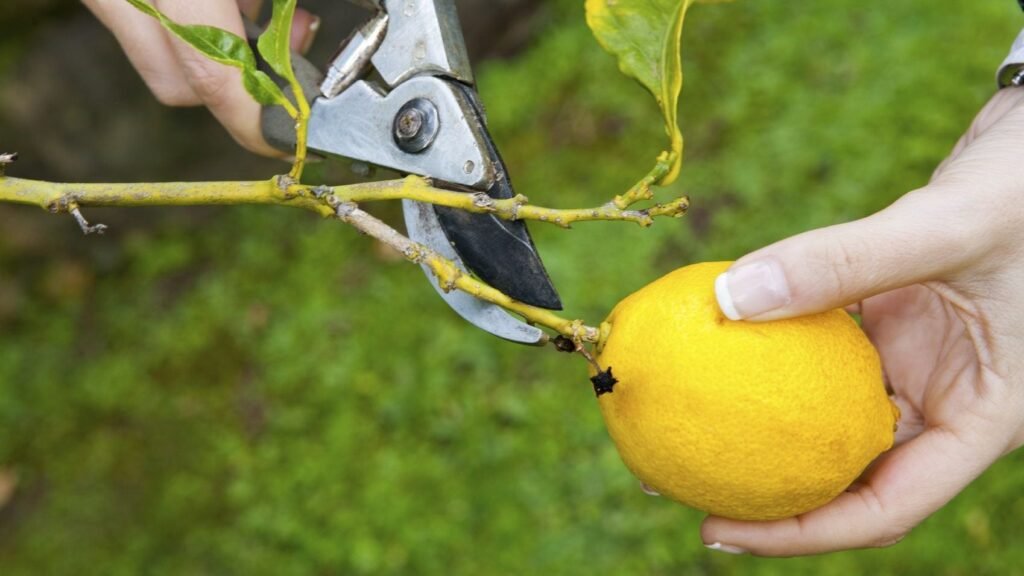
Pruning is not just about aesthetics—it serves several crucial functions that impact the health and productivity of your lemon tree:
- Encourages New Growth: Removing old, dead, or weak branches stimulates the tree to produce fresh shoots where fruiting occurs.
- Improves Light Penetration: Thinning out dense branches allows sunlight to reach the inner canopy, essential for photosynthesis and fruit development.
- Enhances Air Circulation: Proper pruning reduces overcrowding, lowering humidity inside the canopy and minimizing fungal diseases.
- Shapes the Tree: Controlling size and shape makes harvesting easier and keeps your tree manageable.
- Removes Disease and Pest Sources: Cutting out infected or damaged branches prevents the spread of diseases and deters pests.
Ultimately, well-pruned lemon trees produce more flowers and fruit, with better quality and size.
When to Prune Your Lemon Tree
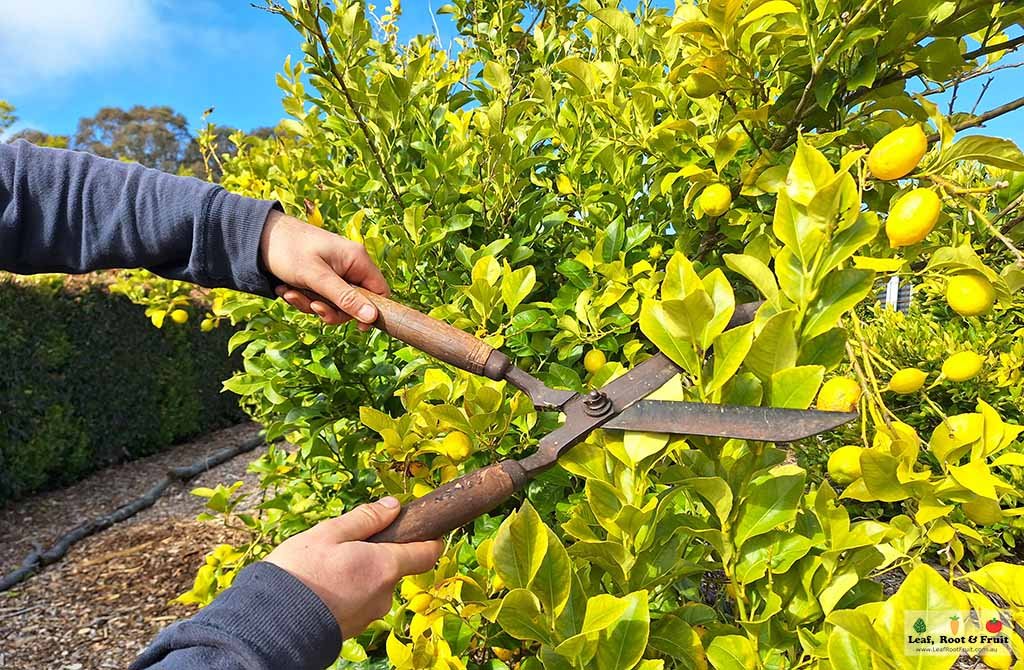
Timing is key to successful pruning. The general rule is to prune just before the growing season begins, which is typically late winter to early spring (in most temperate climates). This timing encourages vigorous growth and reduces the risk of cold damage to tender new shoots.
- Avoid heavy pruning during flowering or fruiting, as this can reduce fruit yield that year.
- Light pruning and maintenance can be done throughout the year to remove dead wood or suckers.
Essential Tools for Pruning Lemon Trees
Using the right tools makes pruning easier, safer, and cleaner, which reduces damage and disease risk:
- Hand Pruners (Secateurs): For cutting small branches up to ¾ inch thick.
- Loppers: For branches up to 1½ inches thick.
- Pruning Saw: For larger branches.
- Gloves: To protect your hands from thorns and sap.
- Disinfectant: To sterilize tools between cuts and prevent disease spread (rubbing alcohol or bleach solution).
Always keep your tools sharp for clean cuts.
Pruning Techniques for More Fruit
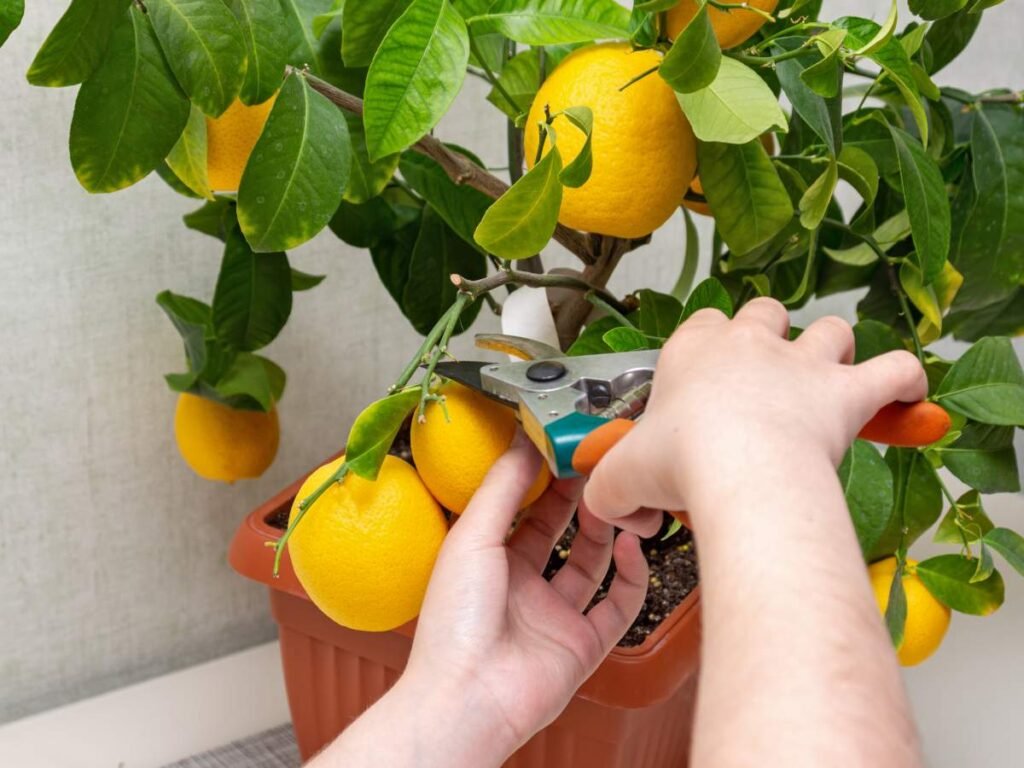
1. Remove Dead, Damaged, or Diseased Branches
Start by clearing away any branches that are dead, broken, or show signs of disease such as discoloration or unusual growths. These branches won’t produce fruit and can harbor pests and pathogens.
- Cut these branches back to healthy wood or to the base.
- Dispose of removed material away from the tree to avoid re-infection.
2. Thin Out Crowded Branches
Lemon trees can become dense, which limits light and airflow. Identify branches that cross or rub against each other and remove the weaker or less productive one. Also, thin out small inner branches to open up the canopy.
- Aim for a balanced, open structure with space between main branches.
- This encourages better fruit set and reduces fungal issues.
3. Cut Back Suckers and Water Sprouts
- Suckers grow from the base or roots and divert energy from the main tree. Cut these off at the base.
- Water sprouts are vigorous vertical shoots that often do not bear fruit. Prune these to encourage lateral growth.
4. Shape the Tree
Control your lemon tree’s size by trimming overly long branches, especially those that grow outward or downward. This keeps the tree manageable and focuses energy on productive limbs.
- Maintain a rounded, vase-like shape with an open center.
- Avoid cutting back more than one-third of the tree in a single session to prevent stress.
5. Encourage Fruiting Wood
Lemon trees bear fruit on new growth, so pruning encourages the formation of fruiting shoots.
- Prune lightly above a leaf node to stimulate branching.
- Avoid heavy cuts on old wood as it produces fewer flowers.
Step-by-Step Pruning Guide
- Prepare Your Tools: Clean and sharpen your pruners and saw.
- Start at the Base: Remove suckers growing from the rootstock or below the graft union.
- Remove Dead or Diseased Branches: Cut these out first.
- Thin the Canopy: Look inside the tree and remove branches that clutter the center.
- Trim Long Branches: Cut back excessively long or leggy branches to a lateral shoot.
- Remove Water Sprouts: Cut vertical shoots flush with the branch they arise from.
- Clean Up: Dispose of all debris, sterilize tools before and after.
Common Pruning Mistakes to Avoid
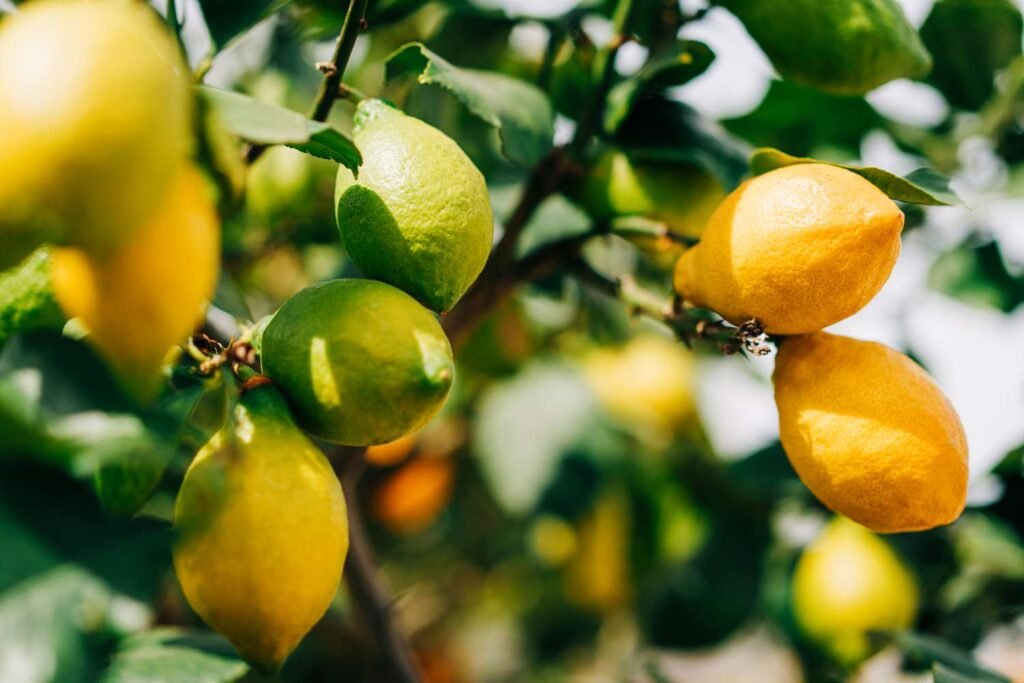
- Over-pruning: Cutting too much at once can stress the tree, reducing fruit production.
- Pruning at the Wrong Time: Heavy pruning during flowering or fruiting can remove potential fruit.
- Tearing Branches: Use sharp tools and make clean cuts to avoid ragged wounds that invite disease.
- Ignoring Diseased Wood: Leaving infected parts on the tree allows problems to spread.
- Not Sterilizing Tools: This can spread pathogens from one branch to another.
Caring for Your Lemon Tree After Pruning
Pruning is just part of the care routine. Follow these steps to ensure your lemon tree recovers well and produces abundantly:
- Watering: After pruning, provide deep watering to support new growth.
- Fertilizing: Apply a balanced citrus fertilizer with nitrogen, phosphorus, and potassium to boost vigor.
- Mulching: Apply organic mulch around the base to retain moisture and regulate soil temperature.
- Pest Control: Keep an eye out for pests like aphids or scale, especially on fresh growth.
- Regular Monitoring: Check for any signs of stress or disease as the tree recovers.
Expert Tips for Maximum Fruit Yield
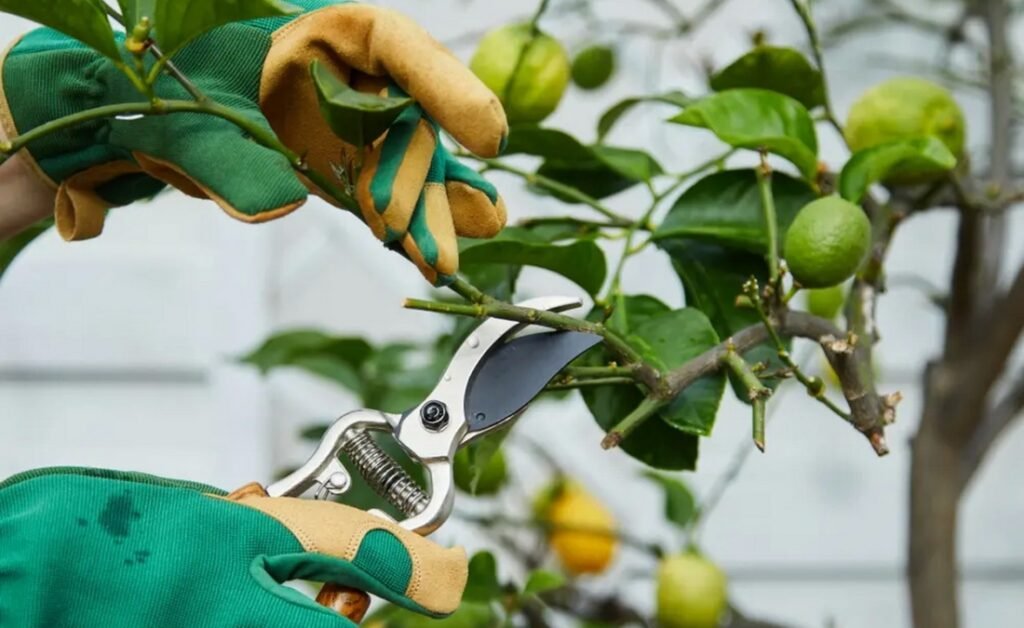
- Prune Moderately Every Year: Annual light pruning is better than infrequent heavy pruning.
- Encourage Flowering: Use pruning cuts to promote lateral growth where flowers and fruit develop.
- Choose the Right Rootstock: Some rootstocks influence tree vigor and fruiting habits.
- Plant in the Right Location: Full sun exposure and well-drained soil are vital.
- Be Patient: Young trees may need a couple of years before they respond fully to pruning.
Conclusion
Pruning your lemon tree isn’t just about keeping it tidy—it’s a powerful tool to increase fruit quantity and quality. By understanding when and how to prune, using proper techniques, and avoiding common pitfalls, you can cultivate a healthy, productive lemon tree that rewards you with bountiful harvests year after year.
Remember, the goal is to strike a balance—remove enough to stimulate new fruiting growth and improve air and light penetration, but not so much that the tree becomes stressed or vulnerable. With practice and care, pruning your lemon tree can become an enjoyable and rewarding part of your gardening routine.





